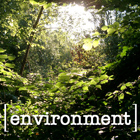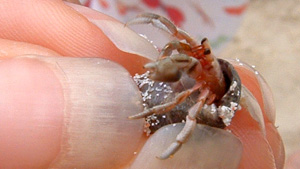
|
|||||||||||||||||||
|
18 December 2005 New calls from conservation groups to take swift and sweeping action to protect species endangered by global climate change are gaining attention. This week, three such groups filed suit against the US government to gain listing for the polar bear as an endangered species at specific risk due to human-induced climate change. In these first years of the 21st century, a planetary "extinction crisis" is spreading and accelerating, and may soon reach levels widespread enough to be classified as the "sixth great extinction" of species in the Earth's history. One key feature of the crisis is the interdependence of species within a given ecosystem and the manner in which degradation of one part of an ecosystem, including extinction of a leading species, can threaten the survival of dependent species. The polar bear, one of the world's more iconic, intriguing and majestic animals, is endangered not only by the melting of arctic ice, which serves as an hunting grounds, by also by the difficulty that ice-melt poses to the bears' finding the species on which they feed. Today, the Guardian Unlimited and the Observer report that fast-growing tree mallow shrubs, indigenous to the Mediterranean, are "choking puffin breeding sites" on Scotland's coastal islands, literally threatening the survival of the species in that region. Without being able to nest in their customary coastal sites, the sea bird is faced with needing to relocate whole colonies to other areas, which may not be apt to the puffin's needs. The herring gull and cormorant, among other sea birds, are also thought to be imperiled by the invading species. The story brings into focus the difficult problem of species dependence on environmental consistency. As with arctic ice-melt and the perils facing the polar bear, global warming is credited with spurring the rapid expansion of tree mallow in what was historically an inhospitable environment for the shrub. The dramatic reduction in puffin breeding sites on the Scottish isles, represents the worst encroachment by an alien plant species on animal habitat in Britain. Unfortunately for the puffin, it is its own method of nesting that facilitates the spread of this alien plant species. The puffin digs burrows which it then uses for breeding and nesting, but which the tree mallow also finds useful in setting its roots and expanding. The spread of tree mallow then makes it difficult for puffin's to use the space they have created and they are forced to move, which after time and effort spent and the rigors of nesting makes the birds more vulnerable to environmental factors. For polar bears, the situation seems more dramatic. As reported by the Times of London, also today, scientists have found evidence that polar bears are now drowning due to pressures from climate change. Some bears are now forced to swim up to 60 miles across open water to find food. The destruction of their environment by record high temperatures makes the polar bears' hunt much riskier and less likely to yield much needed nutrients. Research from the US government’s Minerals Management Service says "Mortalities due to offshore swimming may be a relatively important and unaccounted source of natural mortality given the energetic demands placed on individual bears engaged in long-distance swimming". The disappearance of key species like the polar bear can both signal previous population reductions which may have gone unnoticed and warn of the danger of new extinctions. Some animals, which may not compete directly with a major predator like the polar bear, nor be among their favored prey, may depend heavily on the bears' thinning the population of their most likely predators. Absent that predation check, a less dominant species can also find itself threatened by new environmental perils. Some may argue, as opponents of species protection and conservation have normally done, that the law of the wild is not meant to be fair and that it is not up to human beings to correct what nature does to its own. But of course, we are part of the fabric of nature and many of these changes are now directly (as demonstrated by science) related to human actions which interfere with the normal functioning of ecosystems far removed from the human context in which we start the process of degradation. It is not that nature cannot rule its own house, or that human beings should aspire to micromanage it; it is, rather, scientists say, a case of needing to take responsibility to prevent widespread loss of ecosystem resilience upon which not only individual species, but entire regions and even weather systems may depend. As seen in regions like northwestern China, where deforestation and now desertification have broken the balance of inland precipitation cycles, heavily dependent on foliage, root-structures and soil densities, it is evident that the plight of puffins and polar bears is but one signal of the degradation of ecosystems which define and sustain our own habitat. [s]
BACKGROUND: Almost 440 million years ago, some 85 percent of marine animal species were wiped out in the earth's first known mass extinction. Roughly 367 million years ago, once again many species of fish and 70 percent of marine invertebrates perished in a major extinction event. Then about 245 million years ago, up to 95 percent of all animals —nearly the entire animal kingdom— were lost in what is thought to be the worst extinction in history... After each extinction, it took upwards of 10 million years for biological richness to recover. [Full Story] OUR CLOSEST RELATIVES ARE DISAPPEARING After more than a century of no known primate extinctions, scientists recently confirmed the disappearance of a subspecies of a West African monkey. The loss of this monkey, known as Miss Waldron's red colobus, may be a harbinger of future losses of our closest evolutionary relatives. Out of some 240 known primate species, 19 are critically endangered, up from 13 in 1996. [Full Story] |
||||||||||||||||||
|
|||||||||||||||||||







